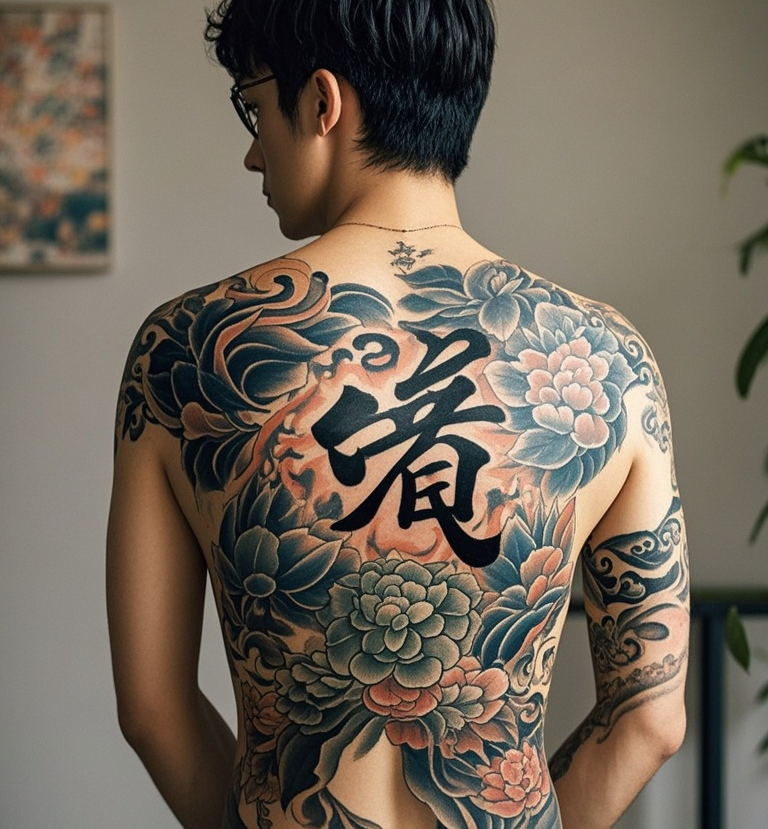
1. Direct Meaning and Breakdown of the Kanji "虞" (Gū / Osore)
The kanji 虞 is a complex character with a heavy and formal tone.
Core Meaning: Apprehension, fear, anxiety; risk, possibility (of a negative event); also, a state of peace (in ancient usage).
Keyword: The foreboding of a potential danger.
Pronunciation:
グウ (Gū): The most common on'yomi (Sino-Japanese reading).
おそれ (Osore): The native kun'yomi reading, meaning "fear," "dread," or "apprehension."
Etymological Breakdown and History:
The character's composition is ancient and not entirely transparent in modern form, but it originally combined:
虍 (Toragashira - "Tiger" radical): This represents a tiger, a symbol of danger and power.
呉 (Go): This part can mean "to do" or has associations with military actions.
The original, classical meaning was "to be cautious and watchful in the face of a potential danger like a tiger," which perfectly encapsulates its modern sense of apprehension about a future risk.
The Duality of Meaning:
Interestingly, in very ancient Chinese texts, 虞 could also mean "peace" or "reassurance," as it referred to officials who managed forests and wildlife, thus preventing dangers and maintaining order. However, in modern Japanese, this positive meaning is entirely archaic and obsolete. The primary and only active meaning is related to fear and risk.
Common Usage in Japanese:
This kanji is used in formal, written, or news contexts to express concern about a negative outcome.
懸念される虞がある (Kenen sareru osore ga aru): "There are fears that..." / "There is a risk that..." This is a very common formal phrase.
地震が起こる虞 (Jishi ga okoru osore): "The risk of an earthquake occurring."
誤解を招く虞がある (Gokai o maneku osore ga aru): "There is a risk of causing misunderstanding."
虞犯人 (Guhannin): A formal term for a "potential suspect."
2. "虞" as a Tattoo: A Serious Discussion of Meanings and Warnings
Choosing "虞" as a tattoo is an extremely profound, somber, and potentially problematic decision. It does not carry positive or inspirational connotations in the way that many other kanji might.
Potential Personal Meanings (Interpretations):
Despite its direct meaning, someone might choose this tattoo for deeply introspective and philosophical reasons:
Memento Periculi (Reminder of Danger): Similar to Memento Mori, this tattoo could be a stark, permanent reminder of the ever-present risks and uncertainties in life. It symbolizes a state of constant vigilance, awareness, and preparedness for adversity.
Acknowledgment of Anxiety or Trauma: For someone who lives with anxiety, has survived a traumatic event, or is inherently cautious, this tattoo could be a way of externalizing and owning their fear. It's a raw and honest statement that says, "I carry apprehension with me, and I acknowledge its presence." It can be a symbol of living with and managing one's inner demons.
A Warning from the Past: It could serve as a permanent reminder of a past mistake or a close call, a "scar" in kanji form that warns the wearer to not repeat history.
The "Peace Through Vigilance" Paradox: For a person deeply versed in classical literature, it could represent the ancient, paradoxical meaning of "peace that is earned through caution and awareness of danger." However, this interpretation is highly intellectual and will be lost on virtually everyone, including native Japanese speakers.
Strong Warnings and Potential Pitfalls:
It is crucial to consider the following before getting this tattoo:
Overwhelmingly Negative Connotation: In modern Japanese, this character has one primary association: the fear of something bad happening. To a Japanese person, seeing this tattoo would be similar to seeing someone with the word "APPREHENSION," "DREAD," or "IMPENDING DOOM" tattooed on them. It would be perceived as deeply pessimistic, morbid, and unsettling.
Cultural Misunderstanding: The positive, ancient meaning of "peace" is completely unknown in modern usage. You cannot rely on that meaning to justify the tattoo, as it will not be understood.
Social Stigma and Misinterpretation: This tattoo may attract concern or negative reactions. It could be misinterpreted as a symbol of paranoia or a generally negative outlook on life.
Permanence of a Negative Emotion: While it can be a powerful way to own one's anxiety, permanently marking yourself with "fear" might, for some, reinforce negative thought patterns rather than liberate them.
3. Design and Styling Suggestions (If Proceeding)
If, after deep reflection, this symbol holds profound personal significance for you, the design should reflect its solemnity.
Simple, Clean Calligraphy: A minimalist, sharp, and serious font (like 楷書 Kaisho) would match the character's grave meaning. Ornate or flowing scripts might create a dissonance.
Placement: A private placement (e.g., on the ribcage, upper thigh) would be more appropriate than a highly visible one, as the meaning is intensely personal and not for public display or judgment.
Incorporating Imagery: If it represents a specific fear or past event, you could incorporate abstract elements that symbolize protection (like a shield) or the specific danger itself, but this is a very delicate balance.
Summary
| Aspect | Explanation |
|---|---|
| Kanji | 虞 |
| Pronunciation | Gū, Osore |
| Core Meaning | Apprehension, fear, risk, the possibility of a negative event. |
| Tattoo Meaning | Vigilance, Acknowledgement of Fear/Anxiety, A Memento of Danger, A Warning from the Past. |
| Suitability | Extremely niche and high-risk. It is only suitable for someone with a very specific, deeply personal, and resilient philosophical or psychological reason. It is very likely to be perceived as morbid, negative, and confusing by others, including native Japanese speakers. |
Final Advice:
While "虞" carries a powerful and undeniable emotional weight for some, it is one of the most challenging kanji to use as a tattoo due to its overwhelmingly negative modern connotation. It is highly recommended to thoroughly explore your motivations and consider if there are other symbols or kanji that could represent resilience (e.g., 耐 tai - "endurance"), overcoming (e.g., 超 chō - "transcend"), or protection (e.g., 護 go - "defend") in a less potentially distressing way. This character is a permanent declaration of living with fear, not of conquering it.